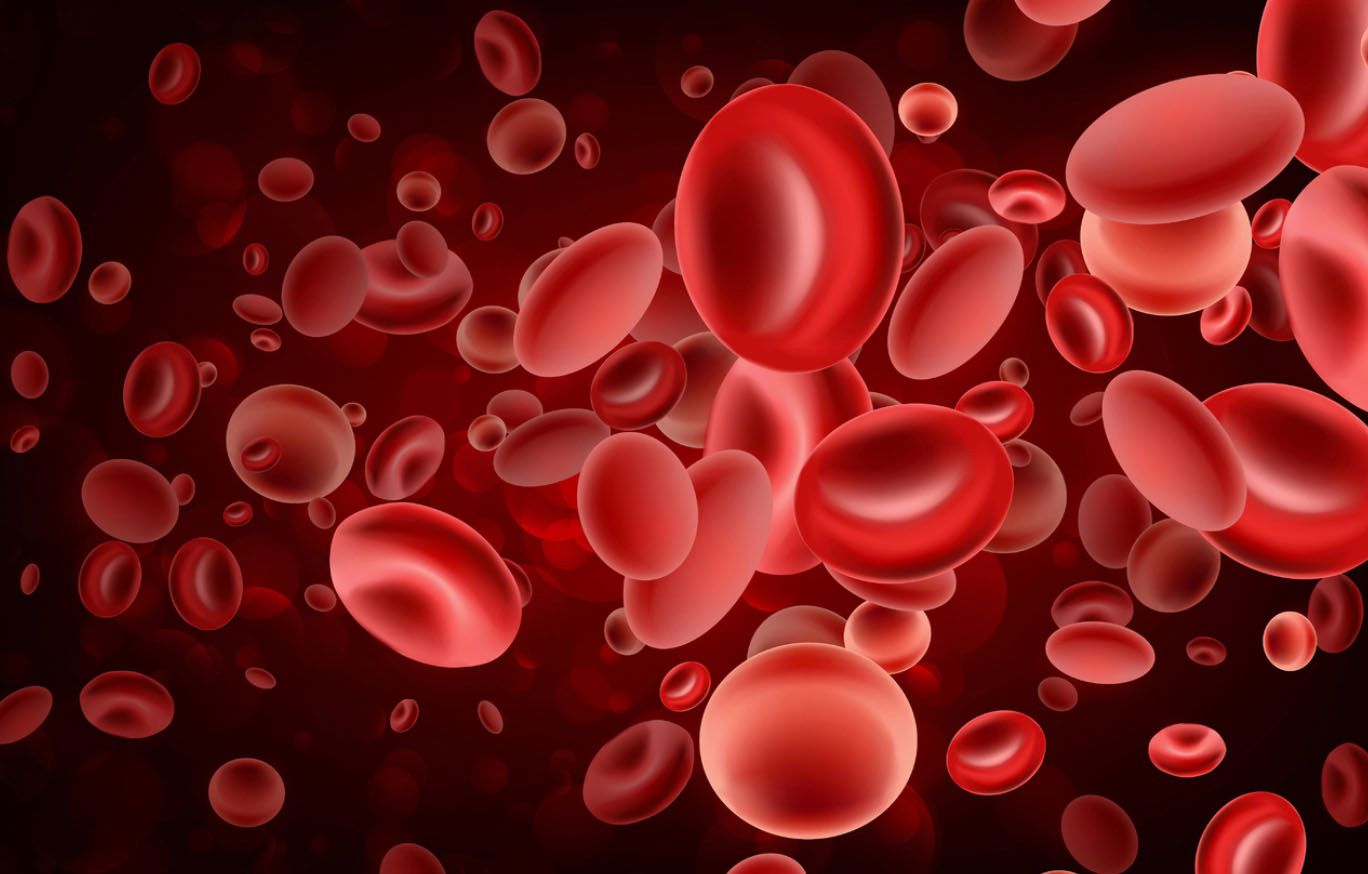RESPONSE-2 Results Further Support Ruxolitinib Use in Hydroxyurea-Resistant PV
Patients with hydroxyurea resistant/intolerant polycythemia vera without palpable splenomegaly who were treated with ruxolitinib experienced a 3-fold increase in the likelihood of achieving hematocrit control over patients treated with physician’s-choice therapy, with a majority of those patients maintaining their response at 80 weeks, according to findings of a phase III prospective trial.

Patients with hydroxyurea resistant/intolerant polycythemia vera (PV) without palpable splenomegaly who were treated with ruxolitinib (Jakafi) experienced a 3-fold increase in the likelihood of achieving hematocrit (HCT) control over patients treated with physician’s-choice therapy, with a majority of those patients maintaining their response at 80 weeks, according to findings of a phase III prospective trial.
“The results from the RESPONSE-2 study demonstrate the clinical benefits of treatment with [ruxolitinib] in PV patients without enlarged spleens,” said Rich Levy, MD, Chief Drug Development Officer at Incyte, the drug’s manufacturer. “We look forward to further analysis of the safety and efficacy data and to sharing the results with the scientific community and regulatory authorities in the coming months.”
Patients with PV without splenomegaly who were resistant or intolerant to treatment with hydroxyurea were randomized 1:1 to receive either single-agent best available therapy (BAT) per physician’s discretion (n = 75) or ruxolitinib (n = 74). The primary endpoint was the proportion of patients achieving HCT control at 28 weeks with secondary endpoints including the proportion of patients achieving complete hematologic remission (CHR), the durability of HCT control and CHR, change in phlebotomy eligibility, and safety.
Baseline characteristics between the 2 groups were similar with median ages in the ruxolitinib and BAT arms of 63 and 67 years, respectively; median duration of previous hydroxyurea therapy of 33.95 and 42.61 months; and baseline median HCT values of 43.0% and 42.6%.
At the primary analysis, 62% of patients in the ruxolitinib arm achieved HCT control compared with 19% of patients treated with BAT (odds ratio [OR] 7.28; 95% CI; 3.43-15.45;P<.0001). One additional patient in the ruxolitinib arm was responding at 80 weeks which increased the number of responders from 46 to 47, or 64%.
“The majority of patients [78%] in the ruxolitinib arm who achieved the HCT response at week 28 were predicted to maintain the response at week 80,” study investigators said. “This is consistent with the [pivotal] RESPONSE study [NCT01243944], where the probability of maintaining HCT control in the ruxolitinib arm for at least 80 weeks from time to response was 89%.”
Durable HCT control was achieved in 35 ruxolitinib-treated patients (47%; 95% CI; 35.6%-59.3%) compared with 2 patients treated with BAT (3%; 95% CI; 0.3%-9.3%) at 80 weeks. Durable HCT control was defined as maintaining response at both 28 and 80 weeks.
There were 18 patients (24.8%) who achieved a CHR that was sustained from 28 through 80 weeks, which included the 1 patient found to be responding after the primary analysis, compared with just 2 patients (2.7%) in the BAT arm (OR 12.60; 95% CI; 2.72-58.44).
Fewer phlebotomies were observed in patients randomized to ruxolitinib compared with BAT (36 vs 106, respectively) to control HCT. There were 15 patients (20.3%) versus 29 patients (38.7%) in the experimental and control arms, respectively, who had 1 to 2 phlebotomies; 5 patients (6.8%) versus 16 patients (21.3%) who had 3 to 4 phlebotomies; and 0 (0%) versus 3 (4%) patients who had more than 4 phlebotomies.
Study investigators estimated that 73% of patients in the ruxolitinib arm did not require any phlebotomies over the course of treatment compared with 36% randomized to BAT.
At the time of data cutoff for the analysis at 80 weeks, 93.2% of patients randomized to ruxolitinib were still receiving treatment, with a median duration of exposure of 93.6 weeks, while no patients were still receiving BAT.
Fifty-eight patients (77.3%) who were initially randomized to BAT had crossed over to receive ruxolitinib, and of those, 51 patients continued to receive treatment at data cutoff with a median duration of exposure of 60.1 weeks. All patients randomized to the BAT arm were allowed to crossover to receive ruxolitinib if they did not reach the primary endpoint.
Patient randomized to the experimental arm were started on ruxolitinib at a dose of 10 mg twice daily with the possibility to be titrated, in 5 mg increments, up to a maximum of 25 mg twice daily. Single-agent BAT was chosen based on the prescribing physician’s discretion. Unless medically contraindicated, low-dose aspirin (75-150 mg) was given to all patients.
Long-term treatment with ruxolitinib was generally well tolerated, with 55% of patients in the experimental group and 60% of those who crossed over from the BAT group not requiring dose reduction through the 80-week treatment. The most common all-grade nonhematologic adverse events (AEs) in the ruxolitinib arm, whose rates were measured as the number of events per 100 patient-years of exposure, were weight increase (10.6), arthralgia (9.1), pruritus (9.1), and constipation (8.3); in the BAT group, pruritus (37.5), headache (16.9), diarrhea (13.1), and upper respiratory tract infection (13.1) were the most commonly reported all grade AEs. Overall rates of grade 3 to 4 AEs (21.1 vs 43.1) and serious AEs (9.1 vs 16.9) were lower in the ruxolitinib arm compared with the BAT arm.
Exposure-adjusted rates for hematologic AEs were lower for ruxolitinib when compared with BAT. Rates of thrombocytopenia (15.0), increased hematocrit (9.4), leukocytosis (7.5), and thrombocytopenia (5.6) were higher with BAT; anemia (14.3) was more commonly observed with ruxolitinib, although most events were mild or moderate in severity.
“Ruxolitinib provided durable HCT control, durable CHR, reduction in phlebotomy requirement…and was well tolerated with more than 90% of patients receiving treatment at week 80 of the REPONSE-2 study,” investigators on the study concluded.
Reference:
Griesshammer M, Saydam G, Palandri F, et al. Ruxolitinib for the treatment of inadequately controlled polycythemia vera without phlenomegaly: 80-week follow-up from the RESPONSE-2 trial.Ann Hematol. 2018;97(9):1591-1600. doi: 10.1007/s00277-018-3365-y.